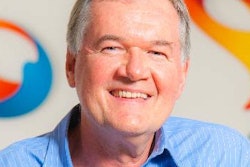Dear MRI Insider,
Before attending the London 2012 Olympics, the chief medical officer of Rio 2016 thought he'd need only one MRI system in the polyclinic. But two days at London 2012 convinced Dr. João Grangeiro that two machines were vital to cope with the heavy workload, underlining the modality's importance in elite sport.
The Rio games are now less than a month away. To get up to speed on what's being done to provide imaging at the event, click here.
The recent discovery of a new source of helium in East Africa is very welcome news for all users and manufacturers of clinical MRI, and you can get the details here. Otherwise, uncertainty is the dominant feature of the European MRI market as a result of the decision by U.K. voters to support leaving the European Union. To read more about the economic outlook for the modality, click here.
When it comes to imaging the brain, an increase in the number of incidental findings is likely to occur in the future because the use of MRI in both the clinical and the research setting will continue to increase in the coming years, according to researchers from Erasmus University Medical Center in Rotterdam. The group has just published the findings of a new study in this area, and you can get the details here.
Demand for MRI examinations at St James' Hospital (SJH) in Dublin increased by 19% between 2010 and 2014, but the radiology department only has sufficient staff to run a five-day service for MRI. Faced with this situation, it's no great surprise that Dr. Niall Sheehy, head of radiology at the SJH, and his colleagues have scrutinized their costs. Click here to learn more.
This letter features only a few of the many articles posted during the past few weeks in the MRI Community. Please scroll through the rest of our coverage below this message.



















